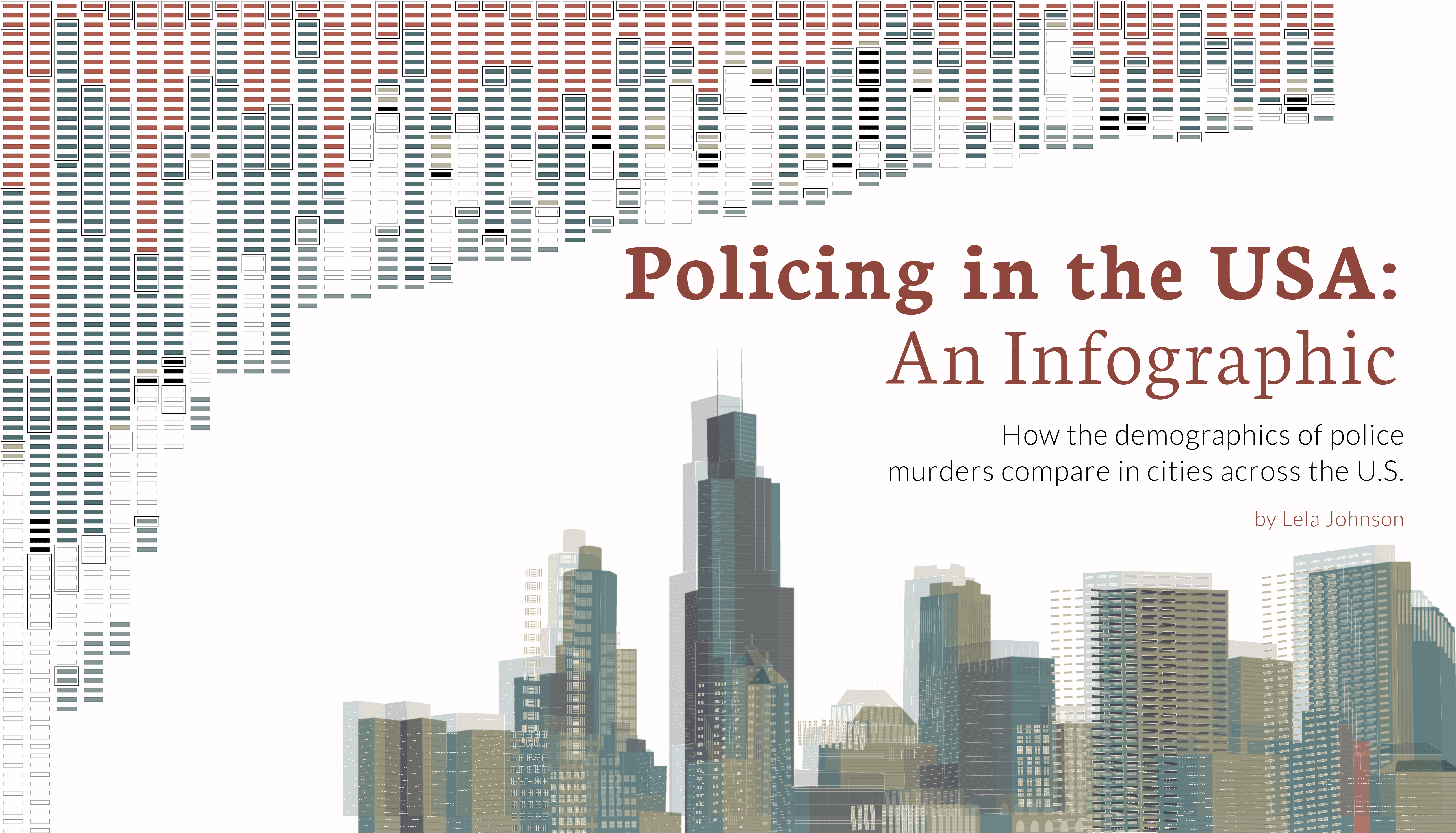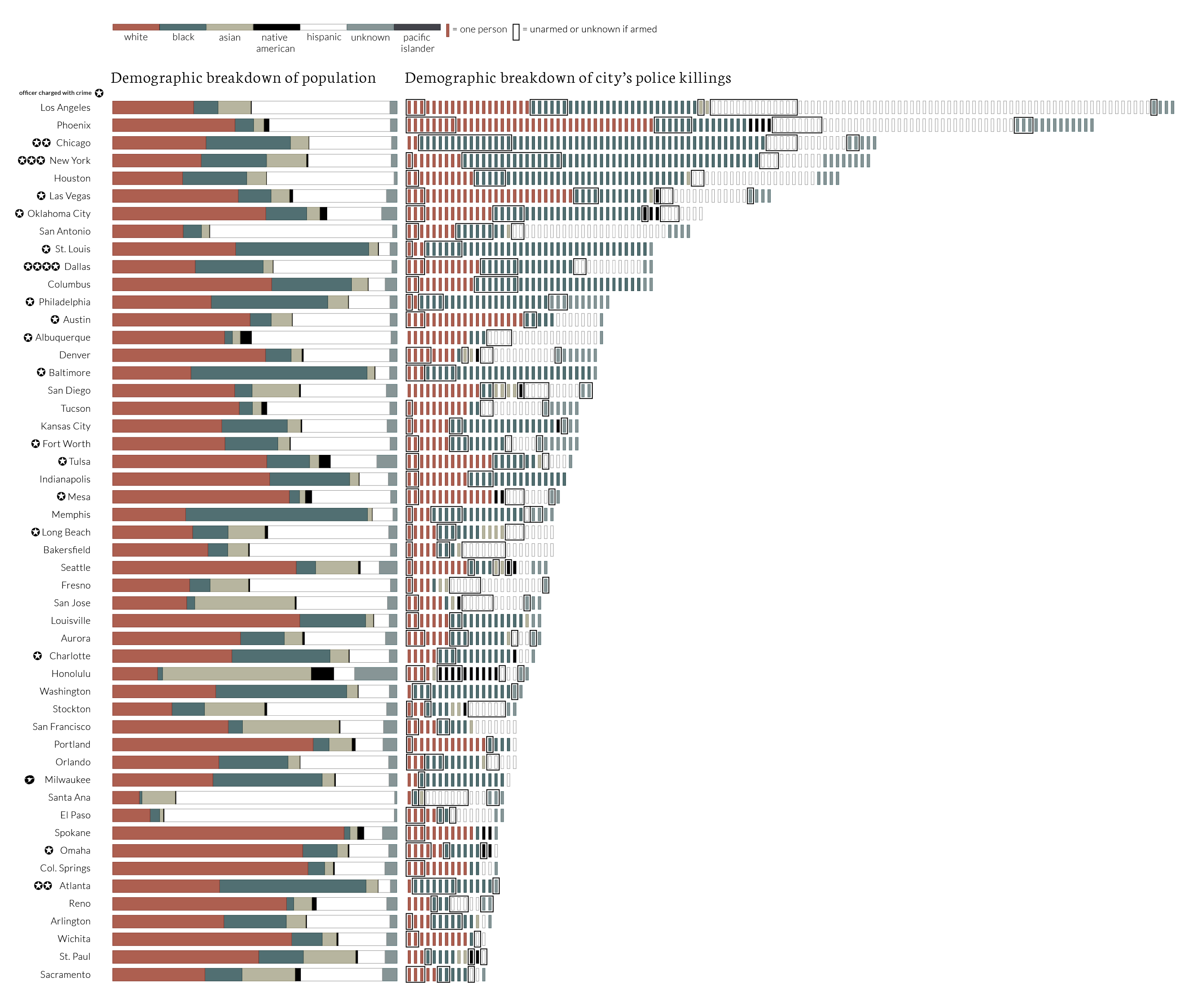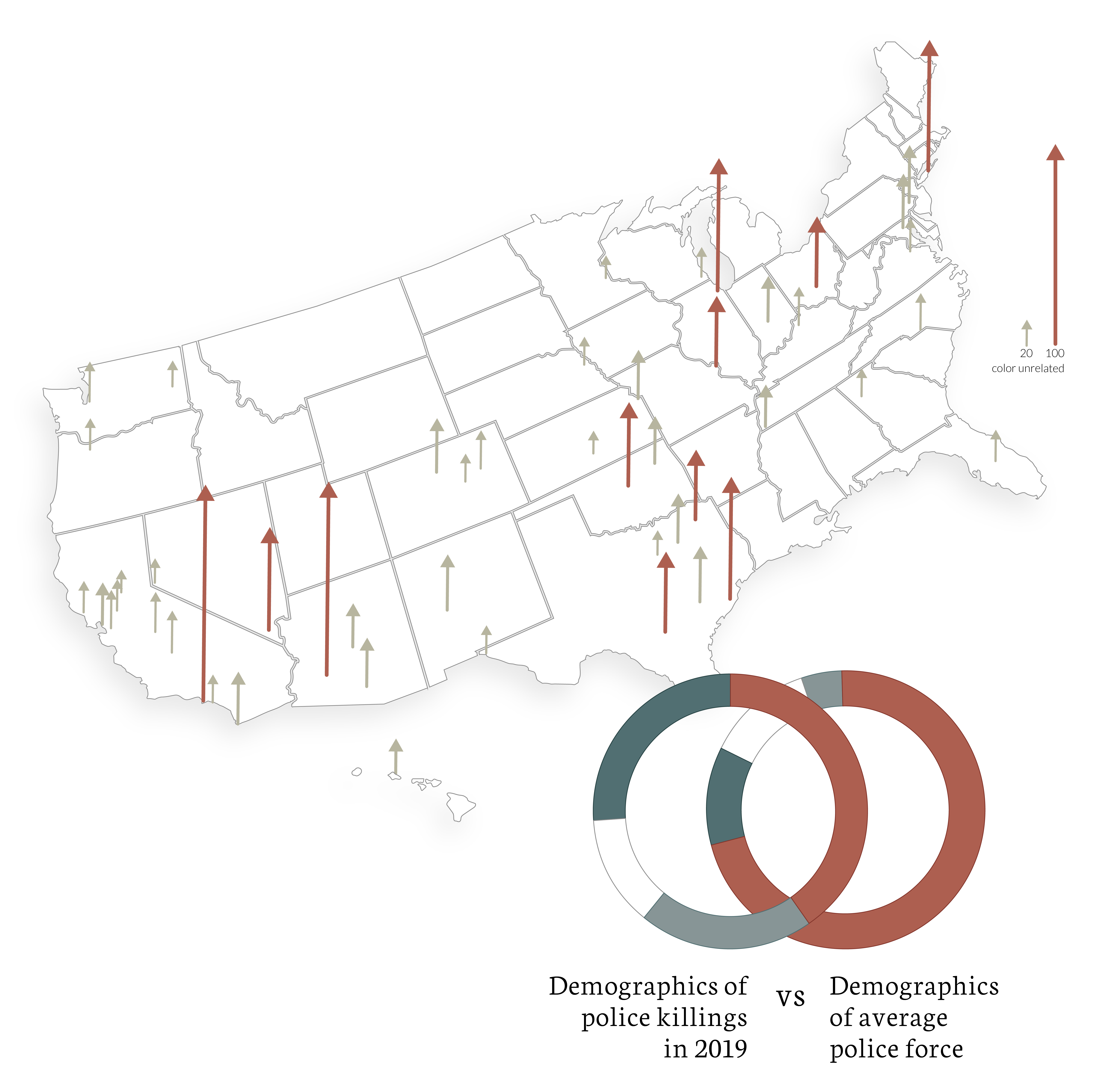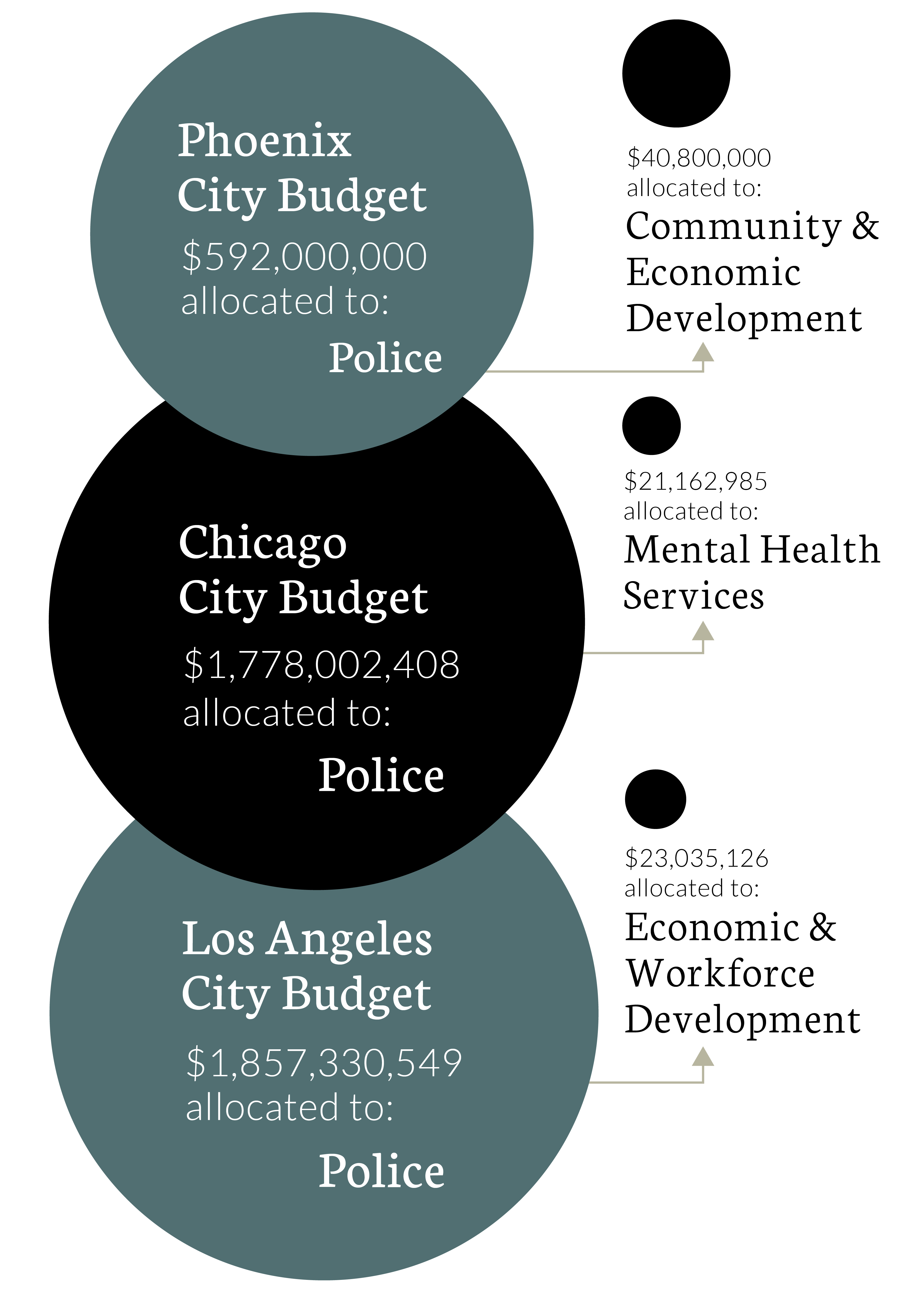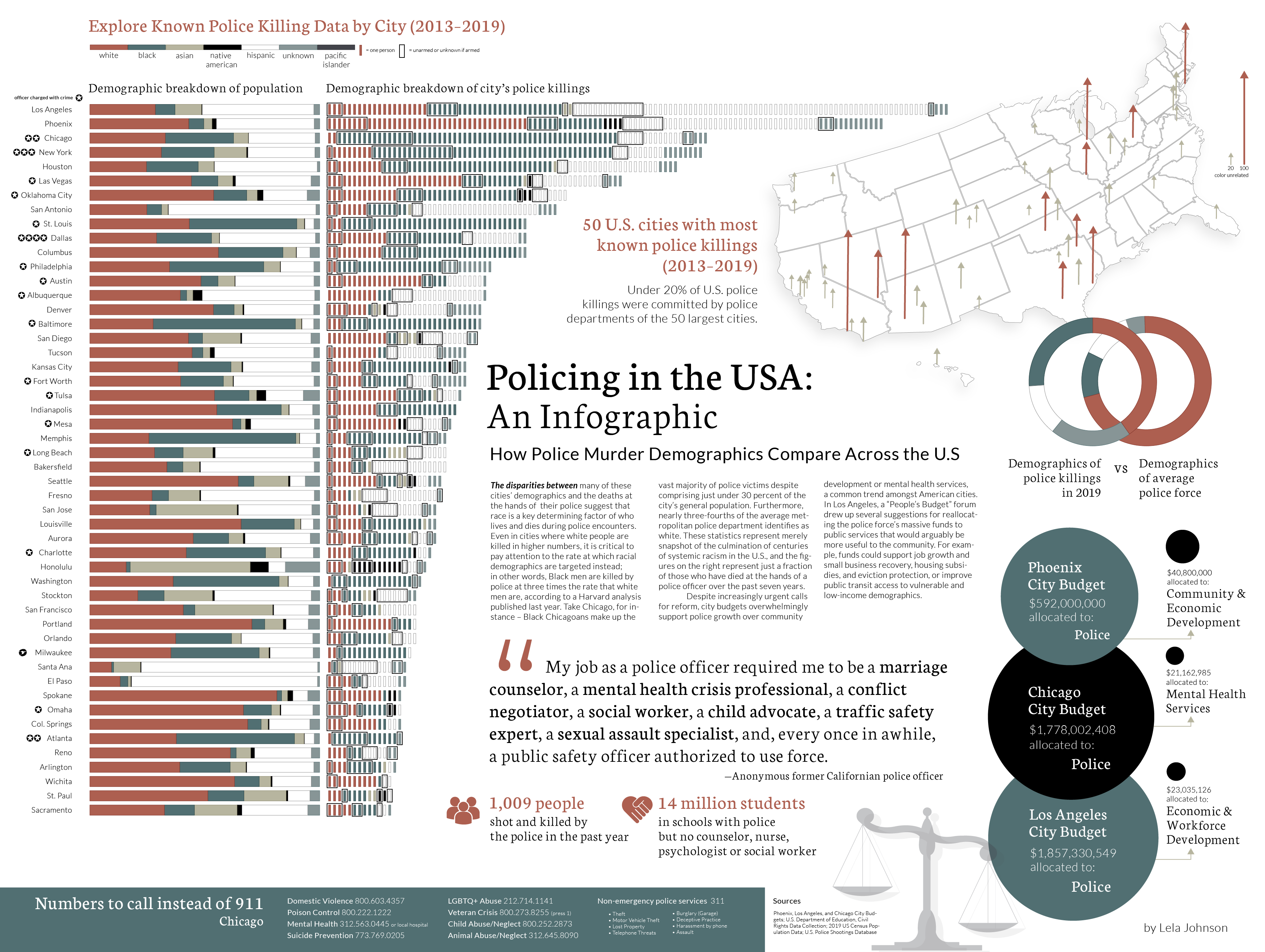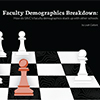Lela Johnson (VCD MFA 2022) is the infographics editor at F Newsmagazine. She forgets the rest.
Illustration by Lela Johnson
The disparities between many of the following cities’ demographics and the deaths at the hands of their police suggest that race is a key determining factor of who lives and dies during police encounters. Even in cities where white people are killed in higher numbers, it is critical to pay attention to the rate at which racial demographics are targeted instead; in other words, Black men are killed by police at three times the rate that white men are, according to a Harvard analysis published last year.
Explore Known Police Killing Data by City (2013–2019)

